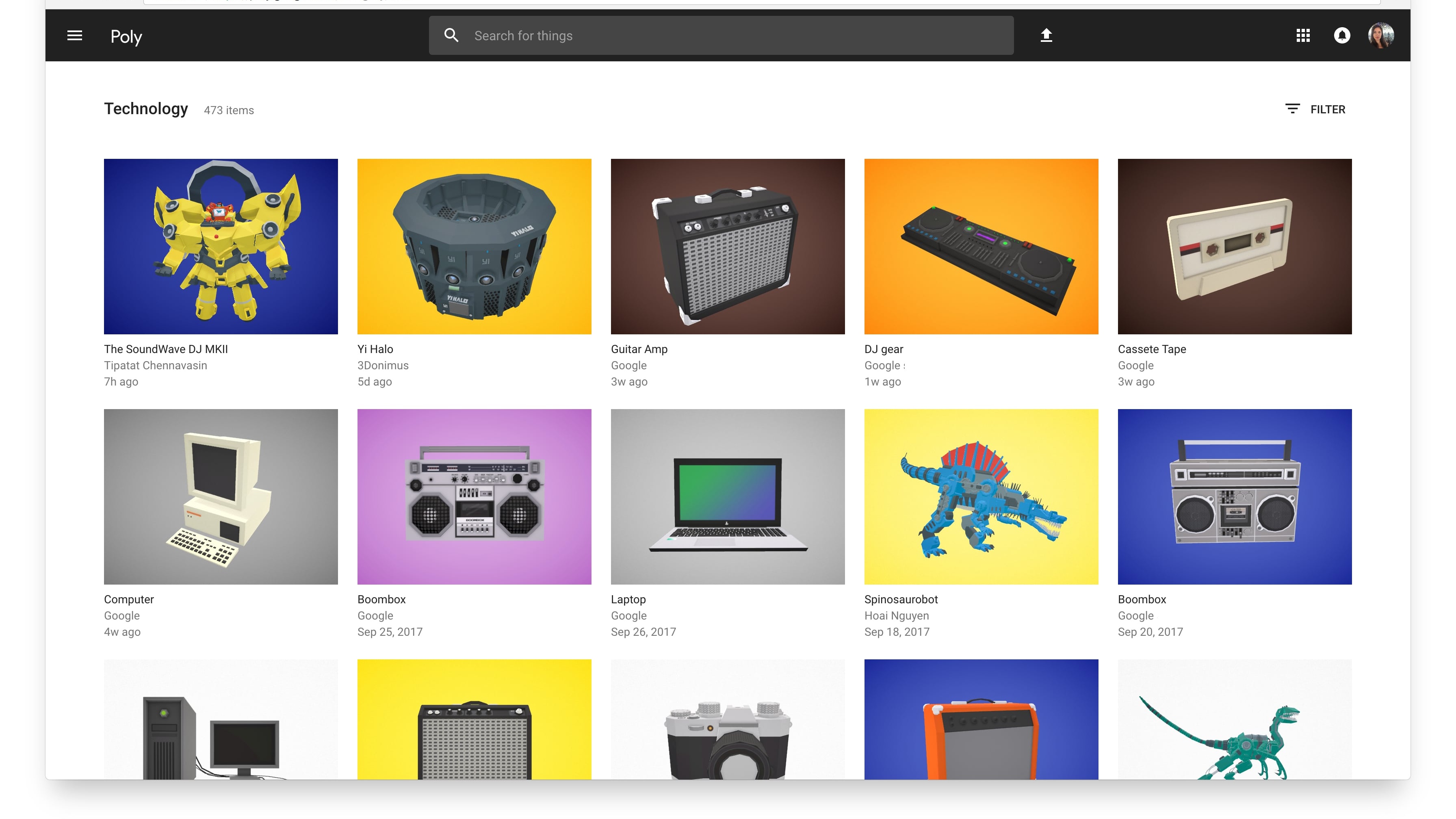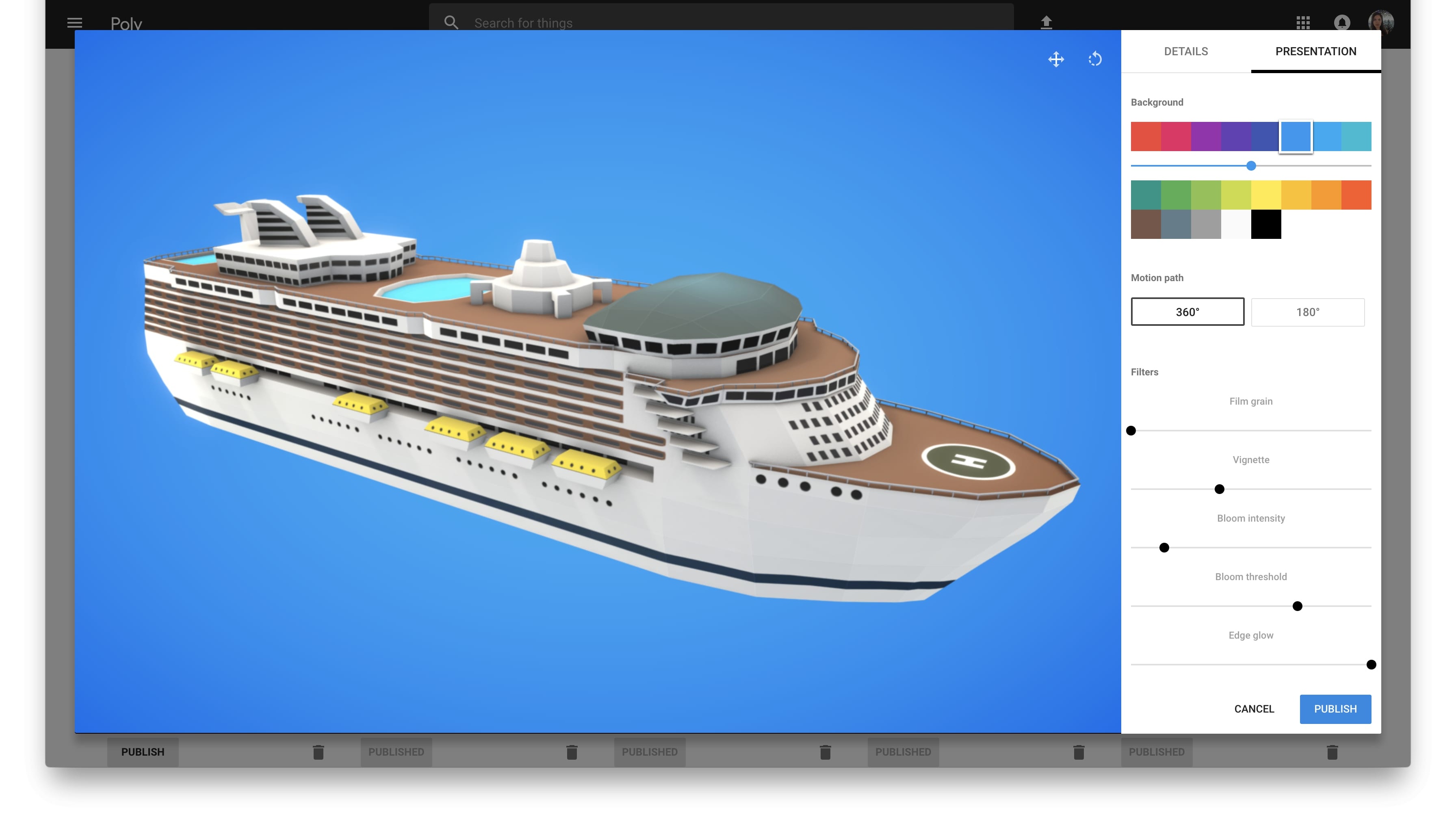We could soon see a lot more AR apps thanks to Google's Poly 3D object library

No matter what your virtual or augmented reality app involves, one thing it’s going to require is 3D object models. Google has long supported the creation of 3D models through its tools such as Tilt Brush and Blocks.
Now, it’s collecting the models created in these tools together in one place called Poly, an asset library from which app developers can browse, discover and download pre-existing 3D objects.
Poly will enable app developers to browse through 3D models uploaded by other users from Tilt Brush and Blocks, and download them completely free.
A real asset
Google has built the source from the ground up with VR and AR app development in mind and it’s already populated with a wide range of objects for developers to use. Whether you’re looking for cruise ships and a lighthouse for a VR nautical scene or a cockpit control center for your AR space ship experience, you’ll be able to find it in Poly’s library.
Even if a model isn’t exactly what you’re looking for, it’s possible to download it and import into Tilt Brush or Blocks to alter it to the exact specifications you need. If you choose to publish and share your mix to expand the Poly library further, it will automatically credit and link to the original creation to ensure artists are appropriately credited.
The Poly asset library is likely to be a serious boon to VR and AR app developers, enabling them to significantly speed up the development process and perhaps reduce costs.

Given VR and AR are still new technologies, the means of quickly developing apps for relevant platforms will be essential in helping them flourish. AR in particular is likely to benefit from this.
Sign up for breaking news, reviews, opinion, top tech deals, and more.
Now that the ARKit development platform has been launched and AR technology is compatible with millions of Apple devices across the world, the platform has breadth. To truly strike a chord with a wide number of users and enter the mainstream, however, quality content will have to be available to give it depth.
If app developers no longer have to spend endless hours crafting 3D models and can take select items from Poly completely free of charge, we’re likely to see AR apps hit the app store at a much faster pace. More apps means more options which, in turn, will hopefully mean more growth and wider appeal.
With Poly, Google is laying good groundwork for the VR and AR development ecosystem and it’s this, more than anything, that will give the platforms the best chance of long-term success.

Emma Boyle is TechRadar’s ex-Gaming Editor, and is now a content developer and freelance journalist. She has written for magazines and websites including T3, Stuff and The Independent. Emma currently works as a Content Developer in Edinburgh.